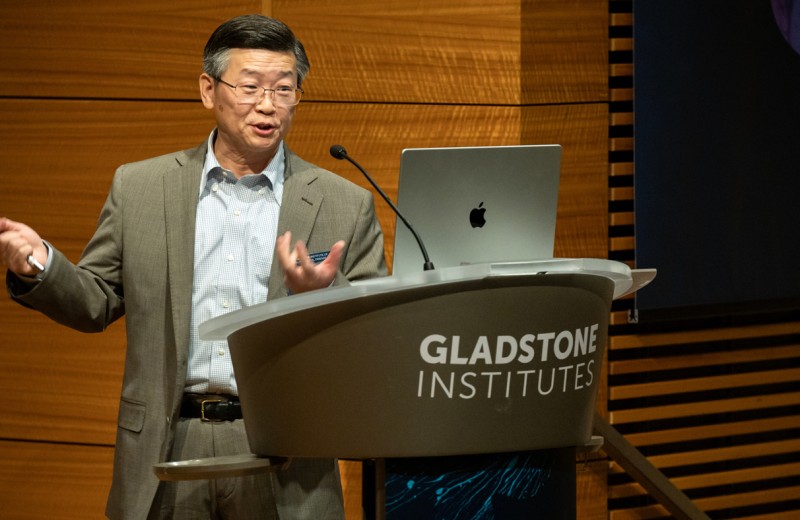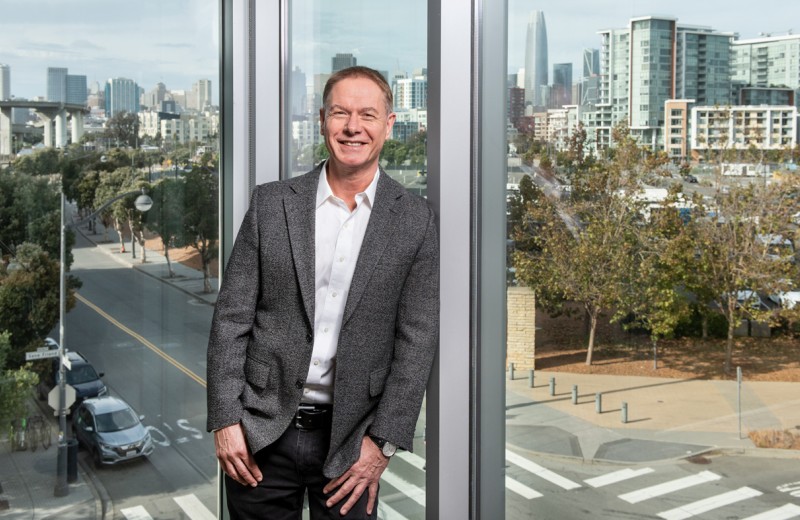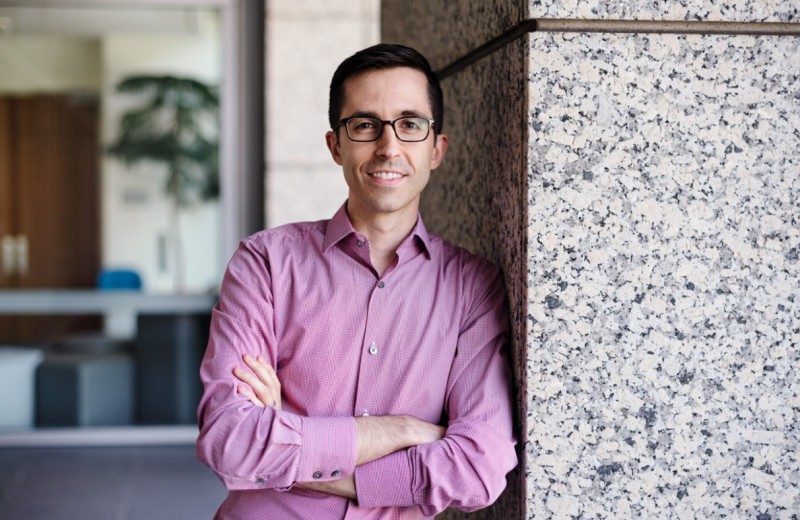Gladstone NOW: The Campaign Join Us on the Journey✕

Chris Carrico is a postdoctoral scholar in the Verdin lab. He joined Gladstone after earning a PhD in biochemistry from the University of Washington. [Photo: Chris Goodfellow, Gladstone Institutes]
What brought you to Gladstone?
I started seriously looking for postdoctoral positions in early 2013. I’d always been interested in studying aging, but my graduate work centered on structural approaches to designing HIV vaccines. Eric Verdin’s lab published a fascinating paper in Science on β-hydroxybutyrate, a metabolite produced during fasting and exercise. They found that the metabolite linked diet and exercise and their benefits to healthy aging. The Verdin lab has also done a lot of HIV research, so I figured it’d be a good bridge from HIV into aging. I was right.
What do you like about Gladstone?
Gladstone has a great sense of connection, mostly because of its scale, I think, but also because of the quality and kind of people it recruits. As a member (and, currently, co-chair) of the Gladstone Postdoc Advisory Committee, I get to spend more time with people outside of my own institute (Gladstone Institute of Virology and Immunology), and everyone I’ve met here is a delight to talk to and work with.
Were you interested in science as a child?
I was into animals. Most kids like dinosaurs, but I started in on taxonomy in a deep way. I was sick a lot as a kid, so books were an escape for me, and my parents tried to steer me towards things with educational value.
Why did you decide to go to graduate school?
After undergrad, I took a couple of years away from science to teach kids in an after-school program. I was burned out on research work, and I wanted to figure out whether I’d be happier doing something else. Science kept calling me, though. A friend of mine recommended me for an ideal transitional slot in Bill Schief’s laboratory at the University of Washington, which modeled structural proteins to design HIV vaccines. That job got me into the Biomolecular Structure & Design program at the University.
What or who influenced your decision to work in science?
As a small child, my grandfather—like his mother before him—was wracked by a series of strokes that took away his ability to talk or function much. When I was 10, I was convinced I’d grow up to be a neurosurgeon, maybe to feel like I could keep the same thing from happening to my mom. Over time, that focus broadened into other fields, and the fear motivation was gradually replaced with excitement about studying things. However, I’ve never lost sight of the very real damage poorly understood and poorly treatable diseases do to our lives and our loved ones’ lives.
What do you do when you are not working in the lab?
I climb rocks a lot, see live music, and spend time with friends. I try to push myself to stay mentally active and engaged with life outside the lab. It’s so easy to bury yourself in work, but I’ve found that outside interests are essential for staying creative and excited about my research.
If you could learn to do anything, what would it be?
I’d love to learn to fly airplanes some day.
What is your hidden/unique talent?
Learning things quickly. In the lab, that means devouring my way through current research. Outside of work, it helps with playing music, making friends, and picking up odd physical hobbies like martial arts, rock climbing, circus arts, and so forth.
Name one thing that not many people know about you.
I’ve been practicing a martial art called escrima for about 5 years. It’s reshaped a lot of how I deal with challenges and stress. And no, it’s not how I got that scar on my face; that’s a totally boring bike-crash remnant.
If you could meet any scientist from any point in time, who would it be and why?
If we’re talking about the past, I’d love to go back to the late 50s to talk about crystallography with Francis Crick. He’s best known for his Nobel Prize-winning work on DNA, but he also contributed hugely to the protein structure methods I learned in graduate school. While we’re speculating, though, I’d much rather go forward 40 or 50 years to see how all the exciting current research panned out in the end.
Gladstone Presents Inaugural Sobrato Prize in Neuroscience to Yadong Huang, a Pioneer of Alzheimer’s Research
Gladstone Presents Inaugural Sobrato Prize in Neuroscience to Yadong Huang, a Pioneer of Alzheimer’s Research
The prize will be awarded annually to a Gladstone scientist who has made breakthrough discoveries in brain research; funds will help advance scientific discoveries from the lab to the clinic.
Awards News Release Alzheimer’s Disease Neurological Disease Huang Lab Aging Human GeneticsHope for Alzheimer’s: A Conversation with Gladstone’s Lennart Mucke
Hope for Alzheimer’s: A Conversation with Gladstone’s Lennart Mucke
Mucke, director of the Gladstone Institute of Neurological Disease, discusses what's next for Alzheimer’s research, the role of nonprofit research in developing new therapies, and why he's more hopeful than ever for a future where neurodegenerative diseases are fully treatable—and even preventable.
Alzheimer’s Disease Neurological Disease Mucke Lab AgingRyan Corces Joins Gladstone Institutes
Ryan Corces Joins Gladstone Institutes
A new lab to study the impact of lived experiences on developing Alzheimer’s disease
Institutional News News Release Profile Alzheimer’s Disease Data Science and Biotechnology Neurological Disease Corces Lab Aging



